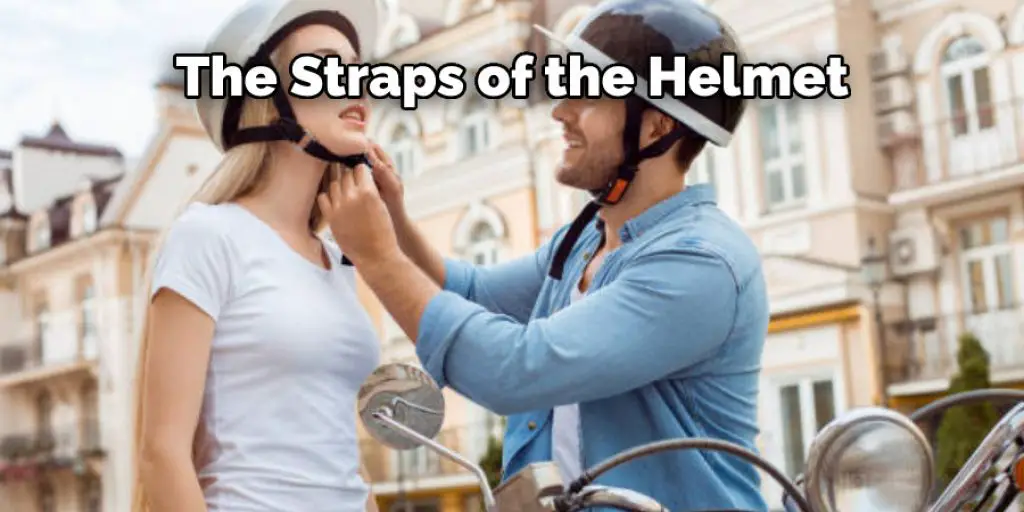How Should Dirt Bike Helmet Fit
When you are looking to buy a dirt bike helmet, you must find one that fits properly. A helmet that does not fit well can be dangerous and might not provide the protection you need in the event of an accident. In this blog post, we will discuss how should dirt bike helmet fit, and we will give you some tips on finding the right size for you. To ensure a dirt bike helmet fits properly, there are certain factors you must take into account.

The helmet should fit snugly so that it doesn’t move around when you shake your head. It should also be level on your head, and the chin strap should be tight enough that the helmet doesn’t move down when you open your mouth. In addition, the helmets come in different sizes, so make sure to choose the right size for your head. Read on for more information.
Why It’s Important To Fit Dirt Bike Helmet?
It’s important to have a well-fitting dirt bike helmet for several reasons. First, it provides much better protection in the event of a crash. A properly fitting helmet will help deflect energy away from your head, reducing the severity of a head injury.
Secondly, a well-fitting helmet is much more comfortable to wear and less likely to come off in a crash. Finally, a good fit means that the helmet’s ventilation system will work more effectively, keeping you cool and comfortable while you ride.
How Should Dirt Bike Helmet Fit: 10 Factors to Know
1. The Position of the Helmet:
The first thing to consider when thinking about how should dirt bike helmet fit is the position of the helmet. Ideally, the helmet should sit squarely on your head with the visor pointing directly ahead. If the helmet is tilted back too far, it can obstruct your vision while riding. Conversely, if the helmet is positioned too far forward on your head, it can impede your breathing.
2. The Fit of the Helmet:
Once the helmet is positioned correctly on your head, it is important to ensure that the fit is comfortable and secure. The helmet should not be so loose that it can move around on your head, but it should also not be so tight that it is uncomfortable to wear. When fastening the helmet, be sure to use all the straps and adjust them as needed to ensure a snug, comfortable fit.
3. The Weight of the Helmet:
Another important factor to consider when thinking about how should dirt bike helmet fit is the weight of the helmet. A heavy helmet can be cumbersome and even cause neck pain after extended periods. On the other hand, a lighter helmet may not offer as much protection in the event of an accident. The best way to determine the ideal weight for your helmet is to try on a few different models and see which one feels the most comfortable.

4. The Ventilation of the Helmet:
The importance of a helmet that provides proper ventilation cannot be overstated. You are bound to sweat when riding, especially in hot weather. If your helmet does not have adequate vents, the sweat will begin to pool on your forehead and run down into your eyes. This is extremely dangerous as it will impair your vision while you are riding. Therefore, a good helmet will have vents that allow the air to circulate and keep your head cool.
5. The Straps of the Helmet:
The helmet straps play a critical role in keeping the helmet securely on your head. The straps should be adjusted to be snug but not too tight. In addition, the helmet should have a chin strap that can be fastened securely under your chin. The straps should also have some mechanism to keep them from slipping off your head.
6. The Visor of the Helmet:
The helmet’s visor is important for protecting your eyes from the sun, wind, and debris. The visor should be made of a shatterproof material and clear so that you have a good view. The visor should also be wide enough to give you good peripheral vision. Finally, make sure that the visor can be removed so that you can clean it.
7. The Size of the Helmet:
The size of the helmet is essential for both comfort and safety. If the helmet is too small, it will not offer adequate protection in an accident. Conversely, if the helmet is too large, it can be difficult to see out of and can impair your vision. Make sure you try on a few different helmets before making your final decision.
8. The Sitting Level of the Helmet:
The sitting level of the helmet is important for dirt bike riders because it helps to protect the brain in case of an accident. The helmet should sit on your head so your forehead is protected. If the helmet is tilted too far back, it can obstruct your vision while riding. Make sure to adjust the helmet straps so that the helmet sits level on your head.

9. The Padding of the Helmet:
The padding of the helmet is essential for two reasons. First, the padding helps to absorb impact in the event of an accident. Second, the padding helps to keep the helmet snug and comfortable on your head. There are two types of padding used in helmets: solid foam and gel. Solid foam is less expensive but does not absorb impact as well as gel. The gel is more expensive, but it does better absorbing impact and keeping the helmet snug on your head. When trying on a helmet, pay attention to the padding and ensure it feels comfortable.
10. The Cheek Pads of the Helmet:
The cheek pads allow the rider to wear the helmet comfortably and act as an impact absorber in a crash. Therefore, it is important that the cheek pads fit snugly against the rider’s face but not too tight that it is uncomfortable. Making the cheek pads too tight can cause more harm than good in a crash.

Additional Tips When Choosing a Helmet for Dirt Bike:
1. Size and weight: Some helmets are larger and heavier than others. Make sure your helmet is not too big or too small for your head. Also, consider the weight of the helmet when making your decision.
2. Field of vision: You want to see as much as possible when riding your dirt bike. Choose a helmet that offers a wide field of vision.
3. Ventilation: Look for a good ventilation helmet to keep your head cool while riding. If the helmet has a visor, ensure it is not too tight, so it does not obstruct your vision.
4. Safety features: Choose a helmet with a chin guard and a visor to protect your face.
5. Comfort: Make sure the helmet you choose is comfortable. You don’t want to be uncomfortable when riding your dirt bike.
6. Measuring the head size: The most important factor in choosing the right helmet size is to measure your head. To do this, wrap a measuring tape around your head just above your eyebrows. Once you have your measurement, consult the size chart of the helmet manufacturer to find the right size for you.
How to Adjust the Dirt Bike Helmet Straps?
Once you have found the right helmet, it is important to adjust the straps so that the helmet fits snugly on your head. In addition, the straps should be adjusted so that the helmet sits level on your head and does not obstruct your vision. To adjust the straps, loosen or tighten the strap at the back of the helmet. You can also adjust the height of the helmet by moving the strap up or down on your head.
It is important to ensure that the helmet straps are not too tight, as this can cause discomfort. The straps should also be adjusted so that they do not slip off your head while riding. If the helmet does not fit snugly on your head, it can come off in an accident, leading to serious injury.

Final Words
A dirt bike helmet should fit snugly and not move around when you shake your head. The chin strap should be tight enough that you can only fit one finger between the strap and your neck. The helmet should sit level on your head and cover your forehead. There should be no gaps between the helmet and your eyebrows.
If you wear glasses, the helmet must have a recess or space to accommodate them; otherwise, they could shatter in an accident. Also, the helmet’s interior should have padding to cushion your head in an impact. This will ensure that the helmet doesn’t come off in a crash. We hope this guide on how should dirt bike helmet fit has been helpful.





